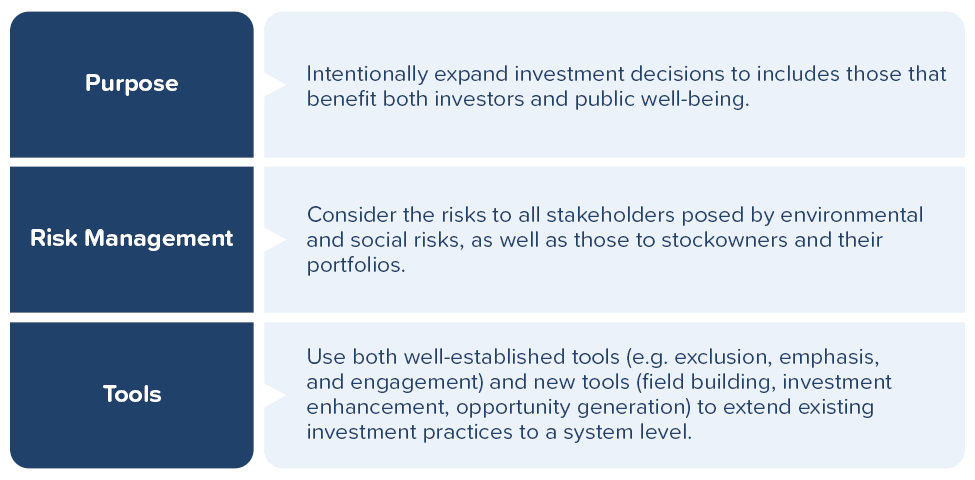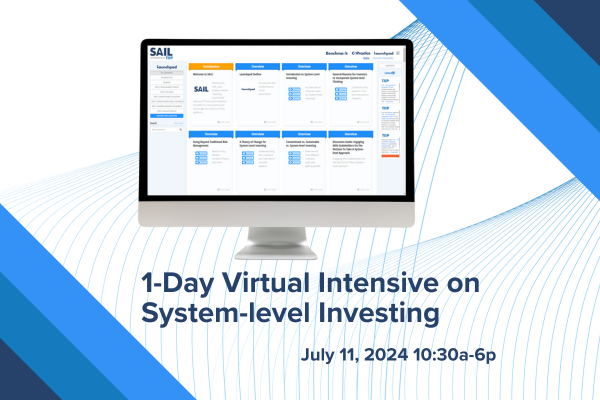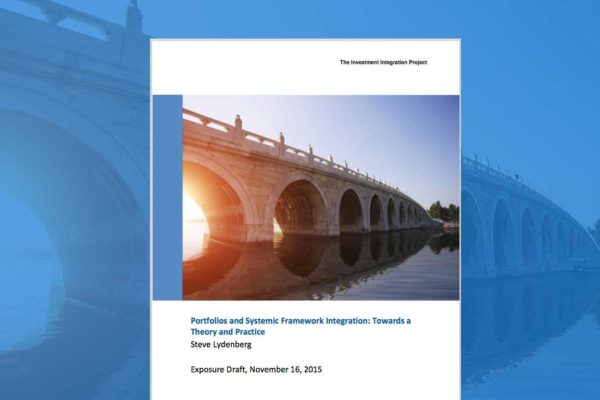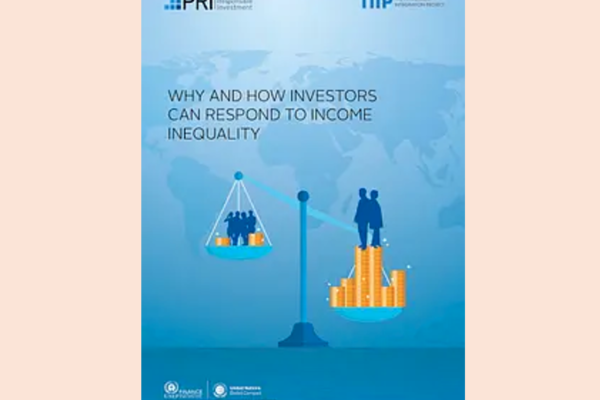Introduction
To support investors in extending or adapting existing policies, programs or practices to the system-level, TIIP developed seven hypothetical scenarios. These scenarios illustrate the nature of these transitions through such things as the re-thinking of purpose, the expansion of their risk management techniques, and the use of tools designed explicitly for system-level influence.

To illustrate these transitions, we chose three different systemic challenges:
- Climate change
- Income inequality
- Availability of sustainability data
Each scenario focuses on an investor from a different silo of the investment world:
- Pensions
- Diversified financials
- Foundations
- Family offices
- Insurance
- Private equity
Each scenario describes the investor and their current status relative to conventional or sustainable investment; the catalytic moment that prompts a decision to change; the challenges in moving forward specific to their institution; their preparation for overcoming those obstacles; the actions they take to do so; and long-term management considerations necessary once that transition to system-level investment has been made.
The purpose of these scenarios is to illustrate seven of the fundamental types of transitions that will arise no matter the type of system challenge or investor. The scenarios assume investors starting from an initial minimal commitment to ESG integration and then portray obstacles that typically stand in the way of a transition to integration of an explicitly systemic approach and steps typically useful in that transition. They are stories about turning points in the journey to fulfilling the full promise of investment: to benefit society as well as the individual. Our hope is that these scenarios help investors today as they address the twists and turns on the road to realizing that potential.
How a Family Office Transitions to the System-level
Case Overview: Generational Shift Forces a Family Office to Alter Investment Practices on Income Inequality
The largest client of a family office asks them to do more on income inequality and they scramble to meet the demand, finding that the results are consistent with their other portfolios.
Key Takeaways
- The youngest generation of the largest client for JKL Trust, a family office, took control of the family assets. They met with JKL and asked them to use the full range of tools to assure that their investments were not increasing income inequality and, if possible, could exercise positive influence.
- JKL staff was taken aback by this request, but because it came from its largest client, it could not be ignored. They discovered that financial industry compensation and tax avoidance policies were among suggested leverage points for investor action on income inequality.
- These issues posed complications for JKL: managing clients’ tax exposure is among its services.
- Given this conflict, JKL recommend the family act on employee relations issues and, specifically, advocate for an increase in the minimum wage. Family members were disappointed and pushed JKL to expand the scope of its initiatives.
- JKL staff decided to focus on freedom of association, human rights, and supply chain risks, as well as adjust its proxy voting policies for the family’s funds.
- Over the next two years, JKL noted that the financial performance of the funds managed with these criteria did not differ significantly from that of their other portfolios.
- As it ramped up these initiatives, JKL created a new staff position to specialize in income inequality. They also struggled with what metrics to use in the tracking and reporting on its impact, so they reviewed the impact management norms developed by the Impact Management Project, formerly a global association of investors seeking to implement effective measurement methods (related resources are now hosted by Impact Frontiers).
Case Detail
JKL Trust is a $3.5 billion family office with a single $500 million family as its principal client. In the past JKL has occasionally implemented limited social and environmental screens for its clients to accommodate one-off requests, but typically discouraged the practice.
Recently the youngest generation of their largest client assumed control of their assets. This cohort met to determine if they shared common interests. Emerging from this discussion was a consensus that the recent global upsurge in income inequality was having a deleterious impact on four pressing social and environmental concerns: climate change, labor and employee relations, human rights, and diversity. They therefore requested that JKL use the full range of the tools at its disposal to assure that their investments at a minimum were not contributing to this increasing problem and, if possible, could exercise positive influence.
JKL staff was taken aback by this request, but because it came from its largest client, they did not feel it could be ignored. They conducted background research on investors addressing income inequality and discovered that financial industry compensation and tax avoidance policies were among suggested leverage points for investor action. These issues posed complications for JKL: managing clients’ tax exposure is among its services. They also did not feel that it was appropriate to be raising questions about fees themselves.
Consequently, they proposed a limited approach: act on employee relations issues and, specifically, advocate for an increase in the minimum wage. Family members were disappointed and pushed JKL to expand the scope of its initiatives. After a full and frank discussion with family members, staff decided to add freedom of association, human rights, and supply chain risks to the mix, although some in the family wanted more. JKL also agreed to adjust is proxy voting policies for the family’s funds to reflect these concerns.
Over the next two years, JKL’s staff cautiously implemented this program. In the second year, it took the additional step of discretely joining with other investors in engagement with companies on these issues. During that time, JKL noted that the financial performance of the funds managed with these criteria did not differ significantly from that of their other portfolios. Toward the end of the second year, as JKL became more comfortable with this approach, the staff began mentioning this option to other clients and discovered unanticipated interest.
As it ramped up these initiatives, JKL encountered two obstacles. The first—the development of in-house expertise on income inequality and related issues— was resolved when it filled a newly created staff position with a specialist in these areas. The second— what metrics to use in the tracking and reporting on its impact—proved more difficult. JKL’s initial step was to review the impact management norms developed by the Impact Management Project, formerly a global association of investors seeking to implement effective measurement methods (related resources are now hosted by Impact Frontiers).
Ultimately, its in-house specialist developed communications formats tailored to the concerns of specific family members and other clients, reporting on progress in addressing income inequality at the level of individual holdings in its portfolios as well as on positive developments at a societal level through shifts in public policy and transformations in public opinion. Throughout, it emphasized JKL’s contributions to progress of these sorts.
Further Reading
Steve Lydenberg, Robert Dannhauser, and William Burckart, “Graduating from ESG to Systems: Scenarios for Investors,” Money Management Institute and The Investment Integration Project, October 2020.
To learn more
Existing SAIL subscribers can access this post here. For a complimentary access to the CoPractice, request a demo or learn how to become a subscriber, contact us at [email protected].



